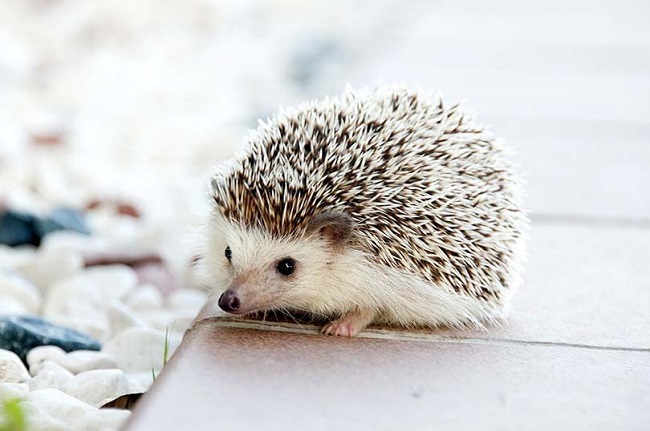Adored for their spiky exterior and cute faces, Hedgehogs have captivated animal enthusiasts worldwide. However, not all Hedgehogs are the same.
There are about 17 Species of Hedgehogs in the world, each with unique characteristics, native habitats, and survival strategies. This article provides a comprehensive guide to the diverse Species of Hedgehogs.

Species of Hedgehogs
Let’s delve into the diverse world of Hedgehogs and explore some of the prominent species.
European Hedgehog
The European Hedgehog, also known as Erinaceus europaeus, is one of the most common species. Native to Europe, from the Iberian Peninsula to Scandinavia, it’s recognized by its relatively large size and brownish fur, and it’s known for hibernating in the cold winter months.
Read Also:
African Pygmy Hedgehog
Popular in the pet trade, the African Pygmy Hedgehog, scientifically named Atelerix albiventris, is smaller than the European variant. With a diverse color range from light brown to black, this nocturnal species is native to central Africa.
Desert Hedgehog
The Desert Hedgehog (Paraechinus aethiopicus) is a small, hardy species native to the deserts of the Middle East and Africa.
Characterized by its light brown and white spines and ability to survive without drinking water for long periods, this species stands out for its adaptation to arid conditions.
Indian Long-eared Hedgehog
The Indian Long-eared Hedgehog, Hemiechinus collaris, is known for its large ears, which help dissipate heat in its native warm environment. It’s found predominantly in India and Pakistan.
Understanding Hedgehog Characteristics
Hedgehogs are characterized by their spines, which are stiff, hollow hairs. These spines serve as a crucial defense mechanism, as a threatened Hedgehog can roll into a ball to protect its vulnerable belly.
Hedgehogs are primarily nocturnal, and their diet ranges from insects to plants and eggs. They have a relatively short lifespan, with most living for 4-7 years in the wild, though some pet Hedgehogs can live longer.
Hedgehog Conservation
Many Hedgehog species are facing population declines due to habitat loss, road accidents, poisoning from pesticides, and climate change. Conservation efforts are ongoing to protect these unique creatures, with measures including habitat restoration and public awareness campaigns.
The Hedgehog in Popular Culture
Hedgehogs have a significant presence in popular culture, from Beatrix Potter’s “Mrs. Tiggy-Winkle” to the iconic video game character “Sonic the Hedgehog.” These representations have greatly contributed to the Hedgehog’s popularity worldwide.
The Importance of Hedgehogs in the Ecosystem
Beyond their captivating appeal, Hedgehogs play a vital role in the ecosystem. They’re significant contributors to pest control as they feed on a variety of insects, spiders, and other invertebrates that can be harmful to crops and plants.
By understanding and respecting the place of Hedgehogs in our ecosystem, we can co-exist harmoniously and ensure their survival for generations to come.
Hedgehogs as Pets
While some species like the African Pygmy Hedgehog are popular pets, owning a Hedgehog requires understanding their needs and providing adequate care.
They require a warm environment, as they can go into a hibernation-like state if they get too cold, which can be dangerous to their health. They also need a diet rich in protein, plenty of exercise, and social interaction to thrive.
The Myth and Symbolism of Hedgehogs
In various cultures, Hedgehogs carry significant symbolism. In ancient Persia, they were seen as creatures of intelligence and wisdom, while in European folklore, they were often associated with fertility and the coming of spring.
Today, they continue to be symbols of resilience and self-preservation due to their unique defense mechanisms.
Adapting to Different Habitats
Hedgehogs show remarkable adaptability to various habitats. While their preferred habitats are meadows, forests, and farmlands, some species like the Desert Hedgehog have adapted to thrive in harsh desert conditions.
These adaptations allow Hedgehogs to survive in diverse climates, from the dry savannahs of Africa to the chilly meadows of Europe.
Caring for Wild Hedgehogs
If you live in a region with native Hedgehogs, you can help these creatures by creating a Hedgehog-friendly environment in your garden. Leaving small gaps in fences can allow them to move freely in search of food.
Providing a pile of leaves or a log pile can give them a safe place to hibernate. It’s essential to be aware and considerate of our spiky neighbors, helping them survive and thrive in the wild.
Read Also:
Conclusion
The world of Hedgehogs is diverse and fascinating, with species ranging from the well-known European Hedgehog to the desert-dwelling Paraechinus aethiopicus. Each species brings its unique traits and adaptations, adding to the charm of these spiky creatures.
Understanding the different Species of Hedgehogs helps us appreciate their role in the ecosystem and highlights the importance of their conservation.
























